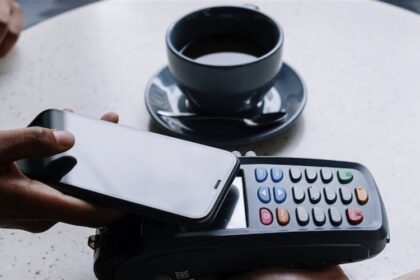Do you struggle with budgeting?
If so, you’re not alone. Most people do.
We struggle because we focus on the wrong thing. When we think of budgeting, we think of the word “no.”
No – you can’t buy that.
NO – you can’t afford it.
NO NO NO. Of course we hate it.
But that’s wrong. Here’s how to reframe your thinking:
Table of Contents
Why do we misunderstand budgeting?
We view a budget as a constraint.
That’s because our brains naturally gravitate towards scarcity. If you grow up with very little, that’s what your brain focuses on – how little you have and how difficult it is to get more. If you’ve ever tried fasting, you know that you start thinking about food all the time. That’s your primitive lizard brain at work.
When you start budgeting, your brain will gravitate towards scarcity because that’s a survival mechanism.
For example, with envelope budgeting, your money is placed within categories (envelopes) and you can only spend whatever cash you have on hand. If you run out of money, stop spending or take money from another envelope.
The focus seems to be on restriction and that’s where our brain settles because it’s familiar and comfortable.
You must force interrupt that pattern.
What does the budget give you?
Budgeting gives you tradeoffs
The envelopes should help you think about tradeoffs, not limits.
You should see each envelope as a way to spend without guilt because you’ve already established your broader plan. Your envelopes reveal your priorities but those may shift as the month and year progresses.
But more importantly, these priorities have were set with intention and not based on the whims of the day. And you set those priorities because you’re making tradeoffs between categories.
If you’ve decided that your wardrobe needs a few new pieces, you’ve may have decided that you will forgo going out for lunch a few times this month to compensate. It’s not about cutting back on eating out for the sake of “an amorphous “saving more money,” it’s bringing in lunch so you can buy new clothes.
That’s the tradeoff and a far healthier way to spend your money.
This is all well and good if you’re running with positive cash flow (income > expenses), but what if you’re not? What if you’re in debt and falling further behind?
Budgeting reveals the gap
If you’re spending more than you earn, a budget will reveal the size of the gap.
Is it a small crack or a wider chasm? If you’re spending $50 more than you earn, that’s different than if the gap is $1,000 a month.
By knowing the extent, and taking it out of your head, you know how much work you’ll have to do.
If the gap is $50, you can look for an immediate solution by cutting back on a few expenses. If the gap is $1,000 – then you know that shutting off Netflix isn’t going to solve it. You may want to do it but you need to think bigger if you want to overcome that gap.
Your budget will tell you the nature of your expenses too. If you’re spending too much on rent, for example, that’s not something you can easily reduce today. You can negotiate your rent when the time comes but that may not be for a few months or more.
But, if you’re paying for half a dozen streaming services, that’s something you can work with.
If you can’t reduce or the gap is wider, you may have to look towards earning more. This can mean taking on side hustles or odd jobs to earn more income. It can mean investing in yourself by developing additional skills so you can ask for raises at work.
Your budget will identify the approach that will be more successful.
Budgeting frees you to spend
This may sound counter intuitive but if you’re like me, spending money is difficult. As the son of first generation immigrants, we were not poor but we lived frugally. It’ll forever be an undercurrent in my life but I’ve worked towards leaving the negative aspects of that thinking behind.
One of the techniques that has helped is understanding that the goal of life isn’t to accumulate as much capital as possible. It’s accumulating enough so that I can enjoy life and do the things that make me happy.
Budgeting helps enable that because when your target is a number, rather than “more,” you don’t feel bad spending money because spending equals “less.”
For example, if you’re following the 20-30-50 rule, you are saving 20%, paying 30% on rent/mortgage, and happily spending the rest on whatever you want. By saving 20% from the jump, you are free to spend half of your income because you’re following your plan.
If you have no plan and no way of tracking the progress, then you’re stuck feeling like you always need more because, when all else fails, more is better.
That’s not a good or effective way to live through life. With a budget and a financial plan, you can make decisions from a position of knowledge and strength. Without it, you’re flying blind and that’s never a good thing.
Budgeting is worth trying
No one enjoys budgeting but we enjoy what it enables in our lives. Much like exercise, it’s a bit of sadistic Type 2 fun.
If you are in a situation where you feel like you’re falling behind or not where you want to be, try budgeting.
It’s as simple as downloading a free budgeting app and seeing what it tells you about your spending.
If you find yourself struggling with the process, reframe it in your mind. Try to catch yourself in the scarcity mindset, break out of it and think about what the budget gives you, rather than takes away.
And promise to yourself that you’ll stick with it for a few months.
It can have a positive impact on your finances if you give it a chance.
Other Posts You May Enjoy:
Bilt Rent Day Promotion March 2024: Easy 2K Bonus Points
On the first of every month, Bilt has Bilt Rent Day – a day in which you can earn additional bonus points. The promotion changes month to month, see what it is now.
How I Lower Our Auto Insurance Premium Costs
With car insurance premiums going up 20% in the last year, you may be feeling the pinch. I share a few strategies I used to lower our insurance premiums.
How to Redeem Your Costco Reward Certificate
Did you get a Costco reward certificate and are wondering how to redeem it? We explain how you can get it direct deposited, with step by step instructions, plus the fastest way to get it redeemed in store.
11 AI Apps to Help You Save Money
AI-powered apps are making our lives easier in so many ways. But did you know that they can also help you manage your money? Here are 10 of the best AI apps to help you save money. Learn more.

About Jim Wang
Jim Wang is a forty-something father of four who is a frequent contributor to Forbes and Vanguard’s Blog. He has also been fortunate to have appeared in the New York Times, Baltimore Sun, Entrepreneur, and Marketplace Money.
Jim has a B.S. in Computer Science and Economics from Carnegie Mellon University, an M.S. in Information Technology – Software Engineering from Carnegie Mellon University, as well as a Masters in Business Administration from Johns Hopkins University. His approach to personal finance is that of an engineer, breaking down complex subjects into bite-sized easily understood concepts that you can use in your daily life.
One of his favorite tools (here’s my treasure chest of tools,, everything I use) is Personal Capital, which enables him to manage his finances in just 15-minutes each month. They also offer financial planning, such as a Retirement Planning Tool that can tell you if you’re on track to retire when you want. It’s free.
He is also diversifying his investment portfolio by adding a little bit of real estate. But not rental homes, because he doesn’t want a second job, it’s diversified small investments in a few commercial properties and farms in Illinois, Louisiana, and California through AcreTrader.
Recently, he’s invested in a few pieces of art on Masterworks too.
Opinions expressed here are the author’s alone, not those of any bank or financial institution. This content has not been reviewed, approved or otherwise endorsed by any of these entities.







